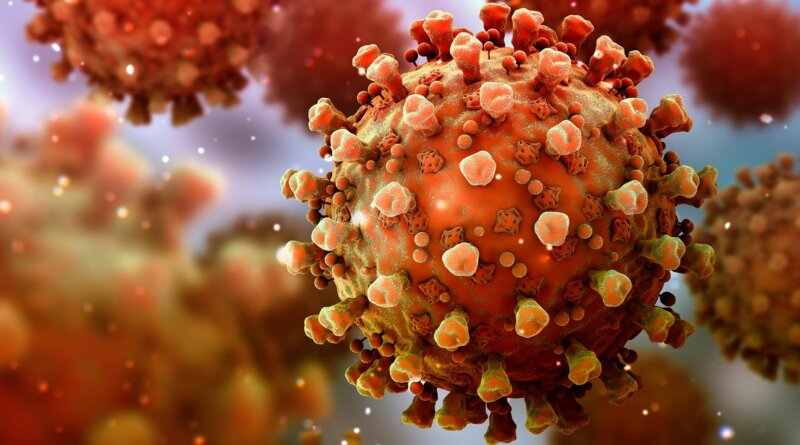Diagnosing Kids with Long COVID Can Be Tricky: Experts
Aug. 15, 2022 – When Spencer Siedlecki got COVID-19 in March 2021, he was sick for weeks with extreme fatigue, fevers, a sore throat, bad headaches, nausea, and eventually, pneumonia.
That was scary enough for the then-13-year-old and his parents, who live in Ohio. More than a year later, Spencer, still had many of the symptoms and, more alarming, the once healthy teen had postural orthostatic tachycardia syndrome (POTS), a condition that has caused dizziness, a racing heart when he stands, and fainting. Spencer missed most of the last few months of eighth grade because of what is known as long COVID.
“He gets sick very easily,” says his mother, Melissa Siedlecki, who works in technology sales. “The common cold that he would shake off in a few days takes weeks for him to feel better.”
The transformation from regular teen life to someone with a chronic illness “sucked,” says Spencer, who will turn 15 in August. “I felt like I was never going to get better.” Fortunately, after some therapy at a specialized clinic, Spencer is back to playing baseball and golf.
Spencer’s journey to better health was difficult; his regular pediatrician told the family at first that there were no treatments to help him – a reaction that is not uncommon. “I still get a lot of parents who heard of me through the grapevine,” says Amy Edwards, MD, director of the pediatric COVID clinic at University Hospitals Rainbow Babies & Children’s in Cleveland and an assistant professor of pediatrics at Case Western Reserve University. “The pediatricians either are unsure of what is wrong, or worse, tell children ‘there is nothing wrong with you. Stop faking it.’” Edwards treated Spencer after his mother found the clinic through an internet search.
Alexandra Yonts, MD, a pediatric infectious diseases doctor and director of the post-COVID program clinic at Children’s National Hospital in Washington, DC, has seen this too. They’ve had “a lot of kids coming in and saying we’ve been passed around from doctor to doctor, and some of them don’t even believe long COVID exists,” she says.
But those who do get attention tend to be white and affluent, something Yonts says “doesn’t jibe with the epidemiologic data of who COVID has affected the most.” Black, Latino, and American Indian and Alaska Native children are more likely to be infected with COVID than white children, and have higher rates of hospitalization and death than white children.
It’s not clear whether these children have a particular risk factor, or if they are just the ones who have the resources to get to the clinics. But Yonts and Edwards believe many children are not getting the help they need. High-performing kids are coming in “because they are the ones whose symptoms are most obvious,” says Edwards. “I think there are kids out there who are getting missed because they’re already struggling because of socio-economic reasons,” she says.
Spencer is one of 14 million children who have tested positive for SARS-CoV-2, the coronavirus that causes COVID-19, since the start of the pandemic. Many pediatricians are still grappling with how to address cases like Spencer’s. The American Academy of Pediatrics has issued only brief guidance on long COVID in children, in part because there have been so few studies to use as a basis for guidance.
The federal government is aiming to change that with a newly launched National Research Action Plan on Long COVID that includes speeding up research on how the condition affects children and youths, including their ability to learn and thrive.
A CDC study published in August found children with COVID were significantly more likely to have smell and taste disturbances, circulatory system problems, fatigue and malaise, and pain. Those who had been infected had higher rates of acute blockage of a lung artery, inflammation of the heart known as myocarditis and weakening of the heart, kidney failure, and type 1 diabetes.
Difficult to Diagnose
Even with increased media attention and more published studies on pediatric long COVID, it’s still hard for a busy primary care doctor “to sort through what could just be a cold or what could be a series of colds and trying to look at the bigger picture of what’s been going on in a 1- to 3-month period with a kid,” Yonts says.
Most children with potential or definite long COVID are still being seen by individual pediatricians, not in a specialized clinic with easy access to an army of specialists. It’s not clear how many of those pediatric clinics exist. Survivor Corps, an advocacy group for people with long COVID, has posted a map of locations providing care, but few are specialized or focus on pediatric long COVID.
Long COVID is different from multisystem inflammatory syndrome in children (MIS-C), which occurs within a month or so of infection, triggers high fevers and severe symptoms in the gut, and often results in hospitalization. MIS-C “is not subtle,” says Edwards.
The long COVID clinic doctors said most of their patients were not very sick at first. “Anecdotally, of the 83 kids that we’ve seen, most have had mild, very mild, or even asymptomatic infections initially,” and then went on to have long COVID, says Yonts.
“We see it even in children who have very mild disease or even are asymptomatic,” agreed
Allison Eckard, MD, director of pediatric infectious diseases at the Medical University of South Carolina in Charleston.
Fatigue, Mood Problems
Yonts said 90% of her patients have fatigue, and many also have severe symptoms in their gut. Those and other long COVID symptoms will be looked at more closely in a 3-year study the Children’s National Hospital is doing along with the National Institute of Allergy and Infectious Diseases, says Yonts.
There are no treatments for long COVID itself.
“Management is probably more the correct term for what we do in our clinic at this point,” says Yonts. That means dealing with fatigue and managing headache and digestive symptoms with medications or coping strategies. Guidelines from the American Academy of Physical Medicine and Rehabilitation help inform how to help kids safely resume exercise.
At the Children’s National Hospital clinic, children will typically meet with a team of specialists including infectious diseases doctors on the same day, says Yonts. Psychologists help children with coping skills. Yonts is careful not to imply that long COVID is a psychological illness. Parents “will just shut down, because for so long, they’ve been told this is all a mental thing,” she says.
In about a third of children, symptoms get better on their own, and most kids get better over time, the doctors say. But many still struggle. “We don’t talk about cure, because we don’t know what cure looks like,” says Edwards.
Vaccination May Be Best Protection
Vaccination seems to help reduce the risk of long COVID, perhaps by as much as half. But parents have been slow to vaccinate children, especially the very young. The American Academy of Pediatrics reported that as of Aug. 3, just 5% of children under age 5, 37% of those ages 5-11, and 69% of 12- to 17-year-olds have received at least one dose of a COVID-19 vaccine.
“We have tried to really push vaccine as one of the ways to help prevent some of these long COVID syndromes,” says Eckard. But that advice is not always welcome, she says. Eckard told the story of a mother who refused to have her autistic son vaccinated, even as she tearfully pleaded for help with his long COVID symptoms, which had also worsened his autism. The woman told Eckard, “Nothing you can say will convince me to get him vaccinated.” She thought a vaccine could make his symptoms even worse.
The best prevention is to avoid being infected in the first place, the doctors say.
“The more times you get COVID, the more you increase your risk of getting long COVID,” says Yonts. “The more times you roll the dice, eventually your number could come up.”



